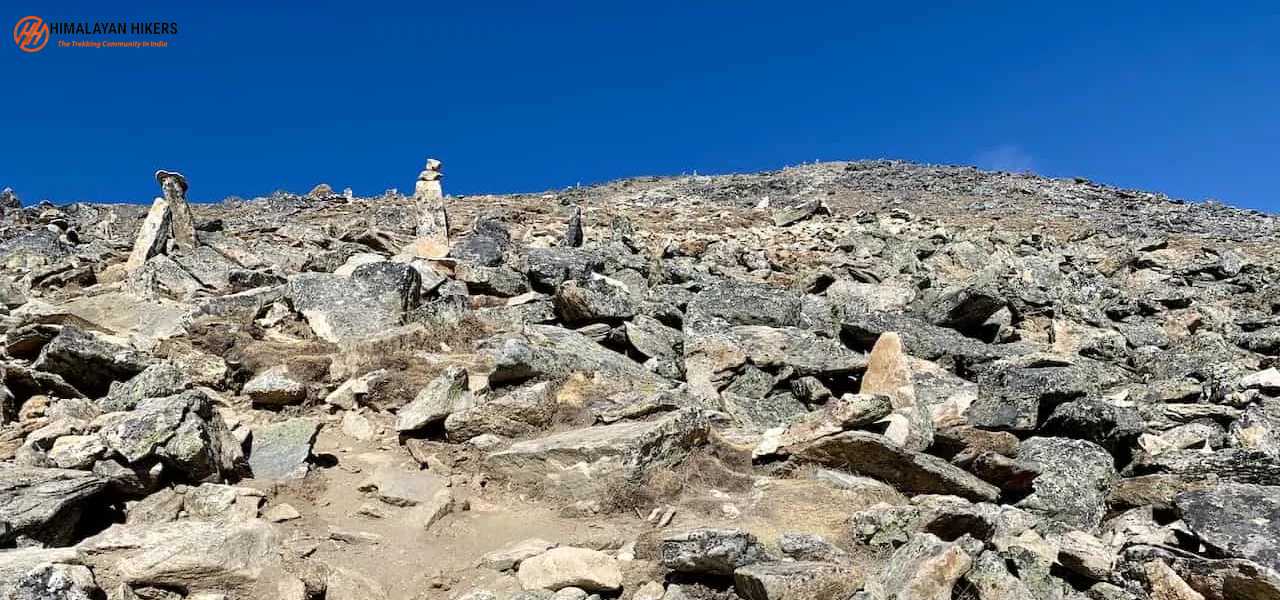Why ‘Cairns in Himalayas’ Matters More Than Google Maps in the Himalayas
by Kuldeep Singh Rawat
2025-06-16
Cairns in Himalayas Matters More Than Google Maps
Imagine this: You're 13,000 feet above sea level, the clouds are brushing against your face, and you're surrounded by endless layers of ridgelines that all look the same. You pause, open Google Maps… and nothing loads.
No signal. No directions. No blue dot.
But just when anxiety starts to crawl in, your eyes catch a small pile of rocks neatly stacked — a cairn.
And suddenly, you know you’re not lost.
What Exactly Are Cairns?
Cairns are simple
stacks of stones, deliberately arranged by
trekkers, mountaineers, and locals to mark a path, indicate a direction, or offer a prayer. In the Himalayas, they are more than mere rock formations — they are ancient markers of wisdom passed from one traveler to another.
Unlike digital apps,
cairns don’t need batteries, don’t glitch, and don’t lose network.
When Google Maps Fails, Cairns Don’t
Why can’t you rely on Google Maps in the Himalayas?
- Zero network coverage beyond base camps
- Maps often misplace or misinterpret narrow trails
- Dangerous in white-out or low-visibility zones
- Can’t differentiate between a worn trail and a cliff edge
But cairns? They are built by those who’ve walked the same dangerous path before you. They’re often placed near forks in the trail, stream crossings, or at blind turns — where choosing the wrong way could cost you hours or even your safety.
Cairns Are Not Just Markers — They Carry Blessings
In Buddhist and local Himalayan cultures, stacking stones has spiritual significance. You’ll often find cairns near high-altitude passes, built by locals with a quiet prayer for safe passage. Some say that every stone added helps carry your intentions skyward.
"When you place a rock on a cairn, you're not just marking a trail... you're connecting with all the other souls that have walked that sacred path before you."
Actual Tales from the Trails
While on a monsoon-season expedition to
Buran Ghati, our team was traversing the upper meadows under thick fog. GPS was hopelessly confused, suggesting we were in a river. But just when we started to feel unsure, we noticed a series of cairns — barely a foot high, but enough to tell us we were on track. They led us safely to the forest line, where the trail reappeared.
That day,
a pile of stones mattered more than a million lines of code.

Cairn Etiquette Every Trekker Should Know
Not all cairns are created equal. Here’s how to respect and use them wisely:
- Follow existing cairns, don’t make new ones unless truly necessary
- Don’t destroy or alter cairns — they could be lifesaving markers
- Offer a prayer or thought of gratitude when you pass one
- Don’t treat them like decor for Instagram; they serve a purpose
Why Trekking Guides Still Rely on Cairns
Ask any experienced Himalayan guide, and they'll tell you —
"Maps are secondary. First, we follow cairns, trails, weather signs, and instincts." Many Indian trails like
Valley of flowers National Park, Hampta Pass, Sar Pass, and Phulara Ridge have cairns on high ridgelines where even veteran trekkers pause to read them.
They aren’t just direction markers. They’re signs that someone made it through.And so can you.
Final Thought: A Note from the Mountains
When you're out on your next trek and you see a cairn, stop. Remember that as powerful as technology is and can be, nature has it's own wisdom. In the wild silence of the Himalayas, a simple pile of stones may very well speak louder than a satellite.
Bonus Tip:
Planning a trek where the use of cairns is important? Seek out a high-altitude trek, like
Hampta Pass, Bali Pass, or Kugti Pass. Cairns are ancient ways of wayfinding existence, and they will respect their authority when they guide you through a high-altitude wilderness setting.
Learn more with
Himalayan Hikers
Deprecated: nl2br(): Passing null to parameter #1 ($string) of type string is deprecated in /home/u293905930/domains/himalayanhikers.in/public_html/blog-detail.php on line 1114

